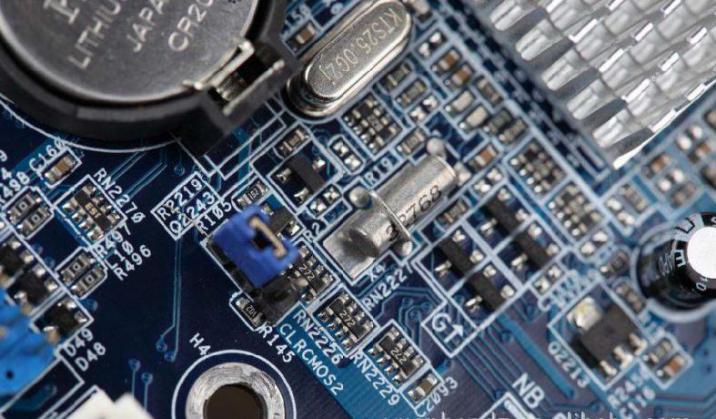
新闻资讯banner
Product inspection requirements for SMT patch processing
- Categories:SMT technology article
- Author:SAJ
- Origin:
- Time of issue:2021-07-07
- Views:0
(Summary description)Before introducing the inspection requirements of SMT chip processing products, let's first understand SMT. So what is SMT? As the name suggests, SMT patch refers to the abbreviation of a series of process processes that are processed on the basis of PCB, and PCB (Printed Circuit Board) is a printed circuit board. SMT is surface mount technology (Surface Mounted Technology) (abbreviation for Surface Mounted Technology), and it is the most popular technology and process in the electronics assembly industry.
Electronic circuit surface mount technology (Surface Mount Technology, SMT), called surface mount or surface mount technology. It is a kind of surface assembly components with no leads or short leads (SMC/SMD for short, chip components in Chinese) mounted on the surface of a printed circuit board (Printed Circuit Board, PCB) or the surface of other substrates. Circuit assembly technology in which reflow soldering or dip soldering is used for soldering and assembly. The process is complex and the assembly density is high, so the inspection requirements are relatively high. However, ...
Product inspection requirements for SMT patch processing
(Summary description)Before introducing the inspection requirements of SMT chip processing products, let's first understand SMT. So what is SMT? As the name suggests, SMT patch refers to the abbreviation of a series of process processes that are processed on the basis of PCB, and PCB (Printed Circuit Board) is a printed circuit board. SMT is surface mount technology (Surface Mounted Technology) (abbreviation for Surface Mounted Technology), and it is the most popular technology and process in the electronics assembly industry.
Electronic circuit surface mount technology (Surface Mount Technology, SMT), called surface mount or surface mount technology. It is a kind of surface assembly components with no leads or short leads (SMC/SMD for short, chip components in Chinese) mounted on the surface of a printed circuit board (Printed Circuit Board, PCB) or the surface of other substrates. Circuit assembly technology in which reflow soldering or dip soldering is used for soldering and assembly. The process is complex and the assembly density is high, so the inspection requirements are relatively high. However, ...
- Categories:SMT technology article
- Author:SAJ
- Origin:
- Time of issue:2021-07-07
- Views:0
Before introducing the inspection requirements of SMT chip processing products, let's first understand SMT. So what is SMT? As the name suggests, SMT patch refers to the abbreviation of a series of process processes that are processed on the basis of PCB, and PCB (Printed Circuit Board) is a printed circuit board. SMT is surface mount technology (Surface Mounted Technology) (abbreviation for Surface Mounted Technology), and it is the most popular technology and process in the electronics assembly industry.
Electronic circuit surface mount technology (Surface Mount Technology, SMT), called surface mount or surface mount technology. It is a kind of surface assembly components with no leads or short leads (SMC/SMD for short, chip components in Chinese) mounted on the surface of a printed circuit board (Printed Circuit Board, PCB) or the surface of other substrates. Circuit assembly technology in which reflow soldering or dip soldering is used for soldering and assembly. The process is complex and the assembly density is high, so the inspection requirements are relatively high. However, different processes have different inspection requirements. Let's take a look at the following Sanjing belts.

1. Printing process quality requirements
①The amount of printing tin paste should be moderate to ensure that there is no little tin or too much tin paste, and it can be pasted well. ②The tin paste dots are well formed, with no continuous tin and uneven state, and the tin dots are full and smooth. ③The position of the solder paste is in the middle, without obvious deviation, and does not affect the paste and soldering effect.
Second, the quality requirements of the component placement process
①The specifications and models of the components in the mounting position should be correct, and the components should be free of missing, wrong, or reversed stickers. ②The components must be placed neatly, in the center, without offset or skew. ③There should be no residual tin beads and tin dross on the pads of multi-pin devices or adjacent components. ④SMD devices with polarity requirements should be installed according to the correct polarity markings.
Three, component soldering process requirements
① The bonding position of the components should be free of rosin or flux and foreign matter that affect the appearance and soldering tin. ②The tin points under the components are well formed, and there is no abnormal wire drawing or sharpening. ③FPC board surface should be free of solder paste, foreign matter and marks that affect the appearance.
Fourth, component appearance process requirements
①SMT patch processing aperture size requirements meet the design requirements, reasonable and beautiful. ②No offset, blur, double image, offset, reverse printing, etc. in the silk-screened text of the marked information characters. ③There should be no cracks or cuts on the board surface, board bottom, copper foil, circuit, through hole, etc., and no short circuit caused by poor cutting. ④ The FPC board should have no leakage of V/V deviation, and be parallel to the plane, and the board should have no bulging deformation or expansion and blistering.
Scan the QR code to read on your phone
Copyright©Sanjing Electronic Technology Co., Ltd. All Rights Reserved 粤ICP备09210657号



 400-1668-717
400-1668-717

 Feedback
Feedback 